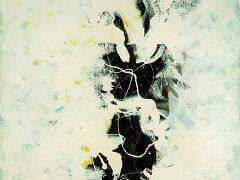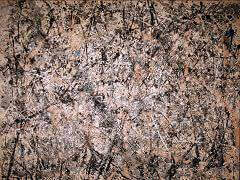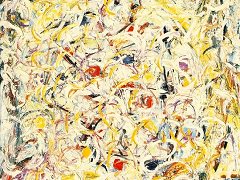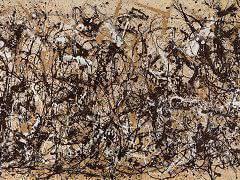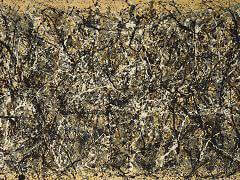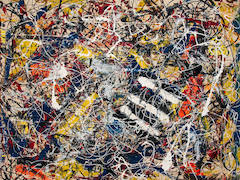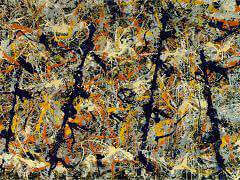Moby Dick, 1943 by Jackson Pollock

Moby-Dick; or, The Whale (1851) is the sixth book by American writer Herman Melville. The work is an epic sea story of Captain Ahab's voyage in pursuit of Moby Dick, a great white whale.
Since Jackson was not much of a reader, there is a legitimate question as to how much, if any, of this novel he ever got through by himself. He certainly appears to have somehow absorbed the general theme of Moby Dick, perhaps
from high school English, or through the interest in Melville of Krasner and others around him (a kind of "fad" for Melville was at its peak in the early forties).
Whatever the extent of his actual exposure to the novel at the time he painted Moby Dick, there did seem to be certain almost uncanny analogies between the author of that nineteenth-century novel and Jackson Pollock, in
both subject matter and style.
Pollock shared with Melville not only feelings of paranoia, but also a definite preoccupation with moody and tragic violence, and their mutual penchant for uncertain and indefinite imagery is seemingly equivalent. Because of
these similarities both, projected in their respective art forms, a particularly "American chiaroscuro."
The way Pollock organized his forms in this small mixed-media work approximates the rhythms of the roiling ocean depths. Fish and what appear to be lower marine forms toss about on the waves, although no discernible white whale
is anywhere in sight.



